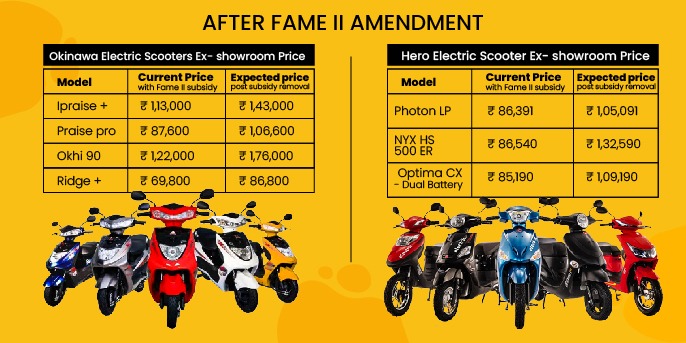Govt Halts FAME-II subsidy for Okinawa and Hero Electric - The Timeline and in-depth analysis.
In an intresting update - Ministry of Heavy Industries halt the FAME-II subsidy for Okinawa and Hero Electric which together holds more than 30% of Market share in Electric twowheeler segment.
Somsubhra Chowdhury12-Oct-22 01:08 PM

